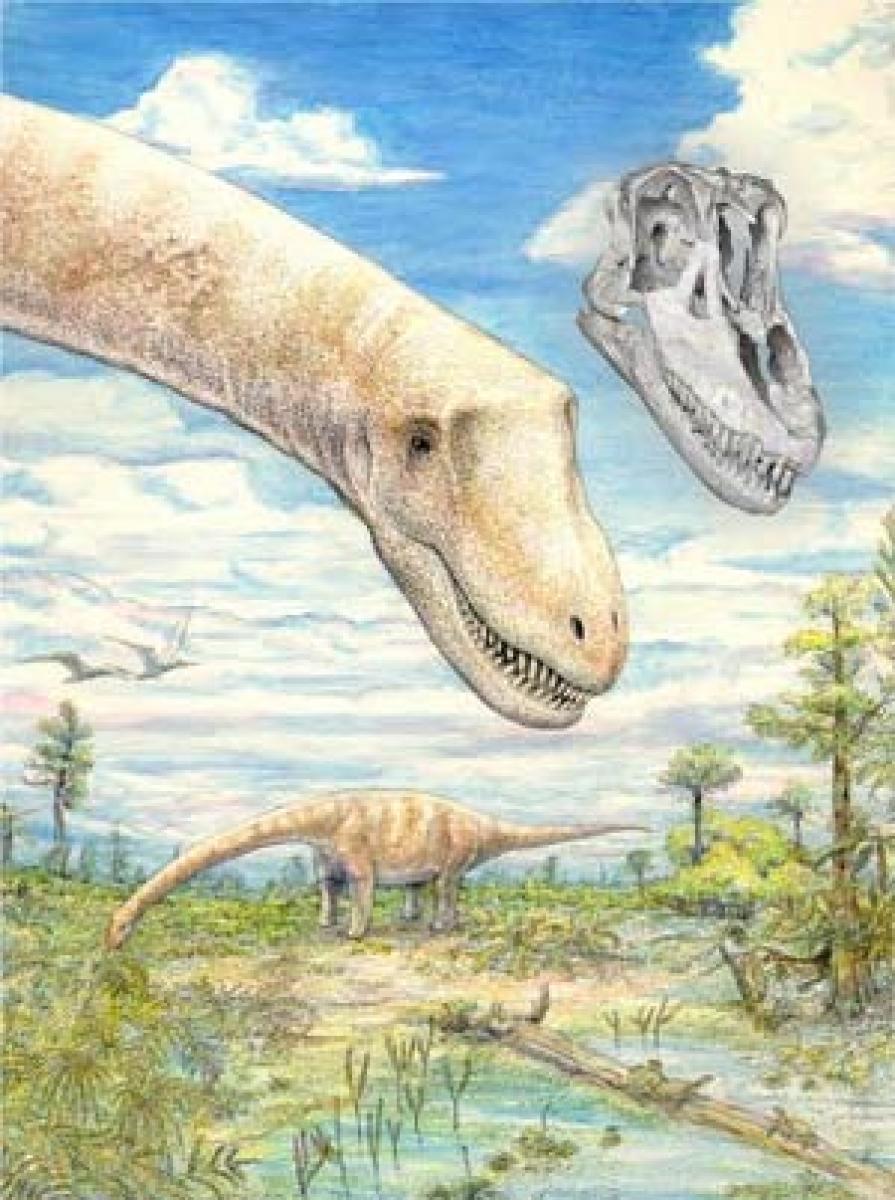Live
- Tight security arrangements at Group-II examination centers District SP
- Alia Bhatt captures attention in white
- Varun Dhawan talks about ‘Baby John’
- ‘Moonwalk’ trailer promises a quirky heist, love, and loyalty
- Combat leaf spot disease
- Ahsaas Channaopens up about her complex character in ‘Mismatched 3’
- Radhika Apte welcomes first child, shares heartfelt post
- Jacqueline dazzles at Da-Bangg Reloaded concert
- Time to boost measures to prevent drowning, save children: WHO
- TDP achieves milestone with 73 lakhs membership registration, says Chandrababu
Just In

A beautifully preserved fossil skull unearthed in Argentina is giving scientists unparalleled insight into the sensory capabilities and behavior of a group of dinosaurs that were the largest land animals in Earth’s history.
A beautifully preserved fossil skull unearthed in Argentina is giving scientists unparalleled insight into the sensory capabilities and behavior of a group of dinosaurs that were the largest land animals in Earth’s history. Scientists announced on Tuesday the discovery of the skull as well as neck bones of a newly identified dinosaur called Sarmientosaurus that roamed Patagonia 95 million years ago. CT scans of the skull revealed its brain structure and provided close understanding of its hearing, sight and feeding behavior.
Sarmientosaurus, about 40-50 feet long and 8-12 tons, belonged to a group called titanosaurs, plant-eating dinosaurs known for long necks, long tails and huge bodies. Sarmientosaurus was a medium-sized titanosaur. The largest species exceeded 100 feet and 50 tons. Of the 60 known titanosaur species, only four, including Sarmientosaurus, have been found with complete skulls.
‘The head is key to understanding an animal’s biology. It’s home to the brain, sense organs, jaws and teeth - food-gathering mechanisms - and more,’ said paleontologist Matt Lamanna of the Carnegie Museum of Natural History in Pittsburgh. Titanosaurs were part of a larger group of similar dinosaurs called sauropods. ‘As for its brain, Sarmientosaurus, bless its heart, was not the sharpest tooth in the jaw,’ Ohio University anatomist Lawrence Witmer said.
Sauropod dinosaurs in general are famous for having the smallest brain size relative to body size, and Sarmientosaurus was no exception. Its brain was about the size of a lime yet its body weighed as much as two or three elephants. Its skull provided the best information on brain structure for any sauropod, Witmer said.
Its hearing organ, the cochlear duct, was long, indicating good hearing of low-frequency sounds transmitted over long distances, perhaps to keep track of other members of the herd when they were out of sight, Witmer said. Its eye sockets and eyeballs were relatively large, suggesting vision was particularly important for Sarmientosaurus, Witmer added.
Its inner ear orientation on the skull indicates Sarmientosaurus had a nose-down head posture and that it fed mostly on ground plants rather than cropping leaves from tall trees, Witmer said. ‘It makes sense to envision Sarmientosaurus standing with its feet planted and moving that long neck around like the wand of a vacuum cleaner while the head vacuums up all the low-growing plants in the area,’ Witmer said. The research was published in the journal Plos One.
By Will Dunham

© 2024 Hyderabad Media House Limited/The Hans India. All rights reserved. Powered by hocalwire.com







